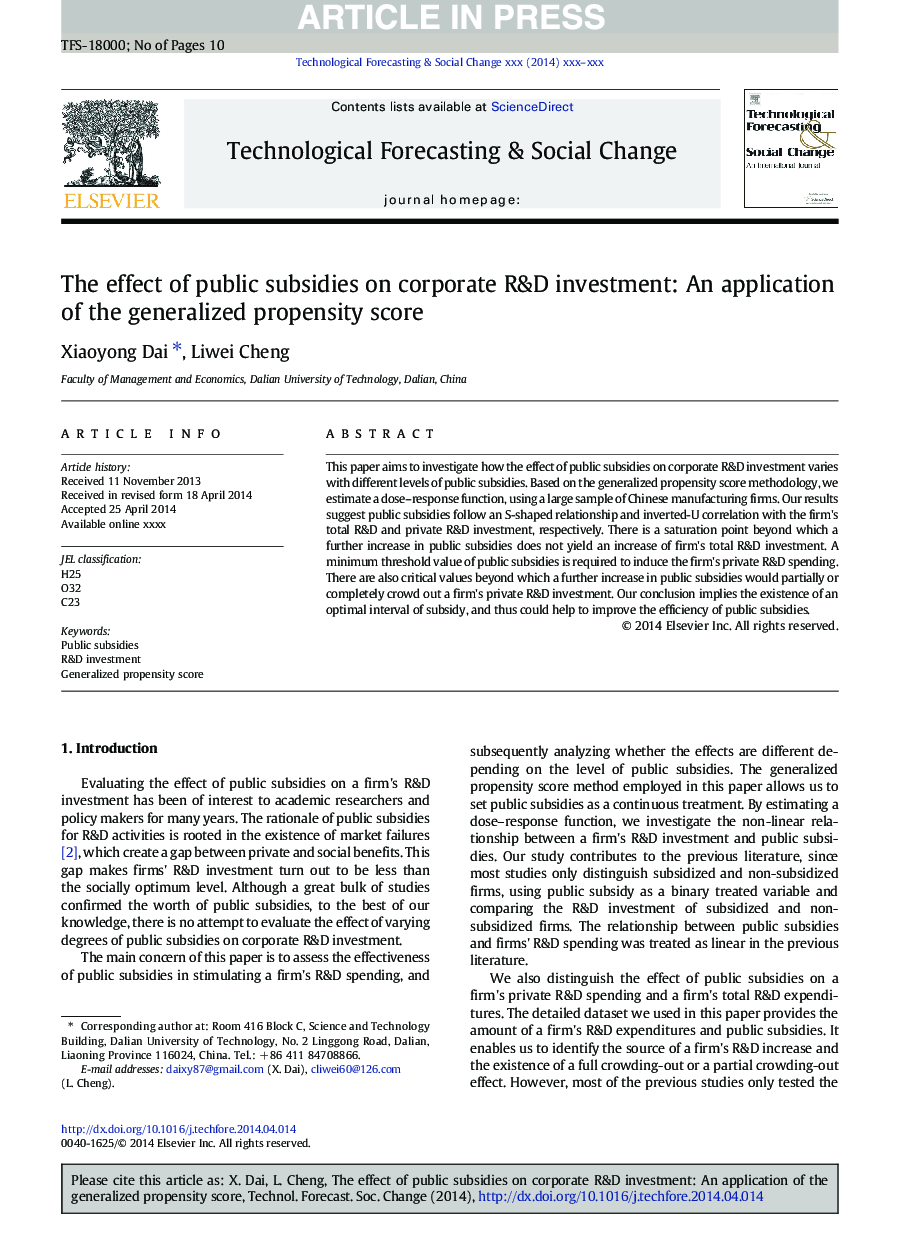| Article ID | Journal | Published Year | Pages | File Type |
|---|---|---|---|---|
| 7256908 | Technological Forecasting and Social Change | 2015 | 10 Pages |
Abstract
This paper aims to investigate how the effect of public subsidies on corporate R&D investment varies with different levels of public subsidies. Based on the generalized propensity score methodology, we estimate a dose-response function, using a large sample of Chinese manufacturing firms. Our results suggest public subsidies follow an S-shaped relationship and inverted-U correlation with the firm's total R&D and private R&D investment, respectively. There is a saturation point beyond which a further increase in public subsidies does not yield an increase of firm's total R&D investment. A minimum threshold value of public subsidies is required to induce the firm's private R&D spending. There are also critical values beyond which a further increase in public subsidies would partially or completely crowd out a firm's private R&D investment. Our conclusion implies the existence of an optimal interval of subsidy, and thus could help to improve the efficiency of public subsidies.
Related Topics
Social Sciences and Humanities
Business, Management and Accounting
Business and International Management
Authors
Xiaoyong Dai, Liwei Cheng,
